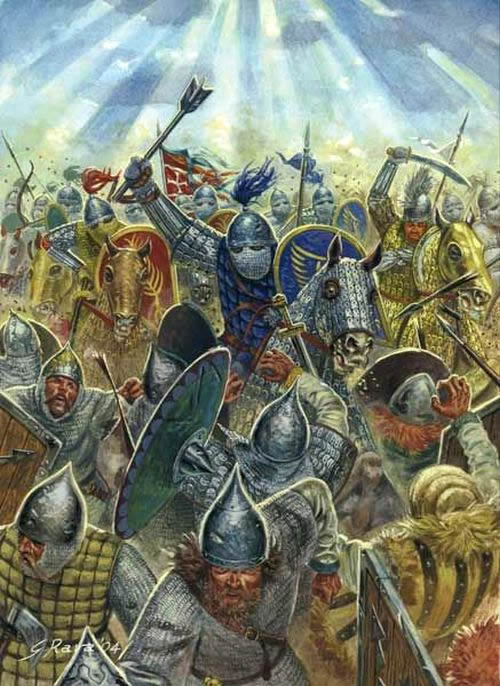In the third century c.e. the Sassanid dynasty replaced Parthian rule in the Persian Empire. Rome and Persia soon ran into conflict over disputed territorial claims, particularly in the Caucasus region.
Diocletian stabilized the frontier by forcing the Persians from the region and establishing suzerainty in 299 c.e. Hostilities resumed when the Persians invaded Armenia, trying to regain dominance, and continued throughout much of the fourth century.
In 363 Emperor Julian the Apostate was killed fighting the Persians. Afterward Rome yielded territory, including Armenia. Relations remained tense (and sometimes hostile) for decades until conflict resumed in the early fifth century. Another factor that led to conflict was religion.
  |
The Eastern Roman Empire was set on Christianity, while the Sassanid Empire was set on Zoroastrianism. When the Persians began to persecute Christians, Theodosius II declared war, which resulted in another treaty.
In 442 relations were ameliorated when both faced the scourge of the Huns and mobilized for defense. Peace was broken in 502 when the Persians demanded tribute and invaded Syria and Armenia.
Hostilities continued on and off throughout the sixth century, concluding in 591 with the Caucasus region returning to Roman suzerainty under Emperor Maurice.
 |
| Byzantine cataphract |
When a military revolt led to the murder of Maurice and the installation of Phocas in 602, the Persians invaded—allegedly acting on behalf of Maurice’s family. Thus began the last Byzantine-Persian war (602–629).
During the war the Roman governor of Byzantine North Africa sent his son Heraclius
With the support of the patriarch of Constantinople, he used church money to buy off the Avars (a hostile people to his north) and rebuild his army with which, in eastern Anatolia in 622, he won his first victory.
   |
Operations then focused on the Caucasus region. In 626 the Persians attempted to besiege Constantinople with the aid of the Avars and Slavs. The city withstood the Avars, while the Byzantine navy defeated the Slav boats that were to ferry the Persians to the European side.
The Byzantines credited the Virgin Mary with the defense of their city. While they turned to their faith, the Persians sought to undermine this fervor. When they had captured Jerusalem, for example, they deported Christians to Persia (including the patriarch) and also took captive the holy relic of the True Cross
The momentum began to shift to the Byzantines who were strengthened by an alliance with the Khazars, a Turkic people from the steppes. In 627 Heraclius defeated the Persians and led his army into Persia. Peace was established after Kavad II overthrew his father King Khosraw II. Heraclius obtained the return of the True Cross. The cost of the war was great.
It was at this juncture that Islam appeared outside Arabia as the “rightly guided caliphs,” the successors of the prophet Muhammad, led the new Muslim armies out of Arabia at the very moment that Persia, having been defeated, and Byzantium, victorious but gravely damaged, could offer little resistance. Persia, Syria, Palestine, Egypt, and North Africa were soon in Muslim hands.

